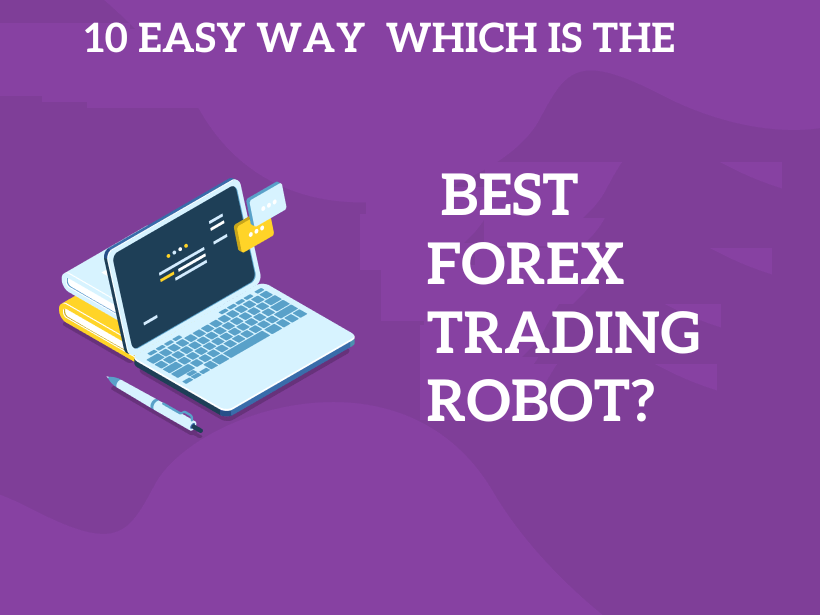Determining the “best” Forex trading robot is a dynamic process influenced by individual preferences and market conditions.
A multitude of factors, such as performance history, strategy alignment, risk management features, and customization options, play crucial roles in the selection process.
Comprehensive research, user reviews, and understanding the robot’s track record are essential. Remember, the optimal choice varies depending on your trading goals, risk tolerance, and real-time market dynamics.

Visit Our Website www.botsfirm.com
Which Is The Best Forex Trading Robot?
Performance and Back testing: Look for robots that have a verifiable track record of consistent profitability over an extended period. Make sure the robot’s performance is backed by real trading results, and not just hypothetical simulations. Also, check if the robot’s performance has been verified by a reputable third-party platform. Which Is The Best Forex Trading Robot?
Strategy Transparency: Understand the trading strategy the robot employs. A good robot should be able to explain its strategy clearly, including the indicators, patterns, or algorithms it uses to make trading decisions.
Customization: The robot should offer some level of customization to align with your risk tolerance, trading goals, and preferred currency pairs. Avoid robots that promise fixed, unrealistically high returns without any flexibility. Which Is The Best Forex Trading Robot?
User Reviews and Reputation: Research user reviews and experiences with the robot. Look for independent sources of information to gauge its reputation in the trading community. Which Is The Best Forex Trading Robot?
Support and Updates: A reliable Forex trading robot should come with ongoing support and updates to adapt to changing market conditions and address any issues that may arise.
Which Is The Best Forex Trading Robot?
Risk Management: A good robot should incorporate effective risk management techniques, such as stop-loss and take-profit levels, to help protect your capital. Which Is The Best Forex Trading Robot?
Which Is The Best Forex Trading Robot?
Regulation and Compliance: If the robot or its creators claim to be regulated or endorsed by a financial authority, verify these claims with the relevant regulatory body.
Cost and Pricing: Consider the cost of the robot in relation to its potential profitability. Avoid excessively expensive robots that might not provide commensurate returns.
Demo Testing: Many trading robots offer demo accounts for you to test their performance in a simulated environment before committing real funds.
Independent Verification: Be cautious of trading robots that make extraordinary claims without any verifiable proof. It’s always wise to be skeptical and do your own due diligence.
Which Is The Best Forex Trading Robot?
Forex Trading Robot Works With Multiple
Forex trading robots, also known as Expert Advisors (EAs) in the context of the Meta Trader trading platform, are automated trading systems that can execute trades on your behalf based on pre-defined trading strategies and parameters. These robots can work with multiple currency pairs simultaneously, provided that the trading platform and the robot itself support such functionality.

Visit our website www.botsfirm.com
When using a Forex trading robot that works with multiple currency pairs, it’s important to consider a few factors:
Strategy Suitability: Make sure the trading strategy employed by the robot is suitable for multiple currency pairs. Some strategies might work well on certain pairs but poorly on others due to differing market behaviors.
Parameter Optimization: Depending on the characteristics of different currency pairs, the robot’s parameters might need to be adjusted to optimize its performance across the various pairs.
Forex Trading Robot Works With Multiple
Resource Requirements: Running a trading robot on multiple currency pairs might require more computational resources from your trading platform and your computer or server. Ensure that your hardware can handle the increased load.
Monitoring: Even though the robot is automated, it’s important to regularly monitor its performance, especially when running it on multiple currency pairs. Market conditions can change, and adjustments might be necessary.
Risk Management: Managing risk becomes more complex when dealing with multiple currency pairs. Each pair can have its own volatility and behavior, which should be factored into your risk management strategy.
Back testing: Before deploying a robot on multiple currency pairs in a live trading environment, it’s advisable to thoroughly back test it on historical data for each pair to evaluate its performance and robustness.
Platform Compatibility: Ensure that the trading robot and the trading platform you’re using support the execution of trades on multiple currency pairs simultaneously.
Broker Limitations: Some brokers might have limitations on the number of open trades or the number of currency pairs you can trade simultaneously. Verify if your broker allows the use of EAs on multiple pairs.
Diversification: Using a trading robot on multiple currency pairs can provide some diversification to your trading portfolio, potentially reducing risk by spreading exposure across different markets.
Forex Trading Robot When To Use And How Do
Using a Forex trading robot (also known as an Expert Advisor or EA) can be a convenient way to automate your trading strategy and execute trades in the Forex market. Here’s a step-by-step guide on how to use a Forex trading robot effectively:

Visit Our Website www.botsfirm.com
1. Understand Your Strategy:
Before using a trading robot, you need to have a clear understanding of the trading strategy you want to automate. The robot will execute trades based on the parameters and rules you set, so knowing your strategy is crucial.
2. Choose a Trading Platform:
Select a trading platform that supports the use of trading robots. Meta Trader 4 (MT4) and Meta Trader 5 (MT5) are popular choices, as they offer a programming language (MQL4 for MT4, MQL5 for MT5) for creating custom trading robots.
3. Obtain or Develop a Trading Robot:
You can choose from existing trading robots available in the market or develop your own if you have programming skills. If you’re not a programmer, you can hire a developer to create a custom robot based on your trading strategy.
4. Install the Robot:
Install the trading robot in your chosen trading platform. This usually involves placing the robot’s files in the appropriate folders of the platform’s directory.
5. Configure the Robot:
Configure the robot’s settings, parameters, and trading rules according to your strategy. This includes things like trade entry and exit conditions, stop-loss and take-profit levels, lot size, and risk management settings.
6. Backtesting:
Before using the robot in a live trading environment, thoroughly backtest it using historical data. This helps you understand how the robot would have performed in past market conditions and identify any potential issues.
7. Demo Testing:
Once you’re satisfied with the robot’s performance in backtesting, test it on a demo account provided by your broker. This allows you to see how the robot performs in real-time market conditions without risking real money.
8. Monitor and Adjust:
Regularly monitor the robot’s performance on the demo account. Keep an eye on its trades, performance metrics, and any deviations from your expectations. If necessary, make adjustments to the robot’s parameters based on your observations.
9. Transition to Live Trading:
If the robot performs well on the demo account over an extended period, you might consider transitioning to live trading. Start with a small amount of capital that you can afford to lose and closely monitor the robot’s performance.
10. Continuous Monitoring:
Even when the robot is trading in a live environment, continue monitoring its performance. Market conditions can change, and adjustments might be needed to adapt to evolving trends.
11. Risk Management:
Implement robust risk management strategies alongside the trading robot. Set maximum risk per trade and overall exposure limits to safeguard your capital.
12. Stay Informed:
Stay informed about any updates or changes to the trading robot, the trading platform, and the Forex market itself. Be prepared to adapt if necessary.

